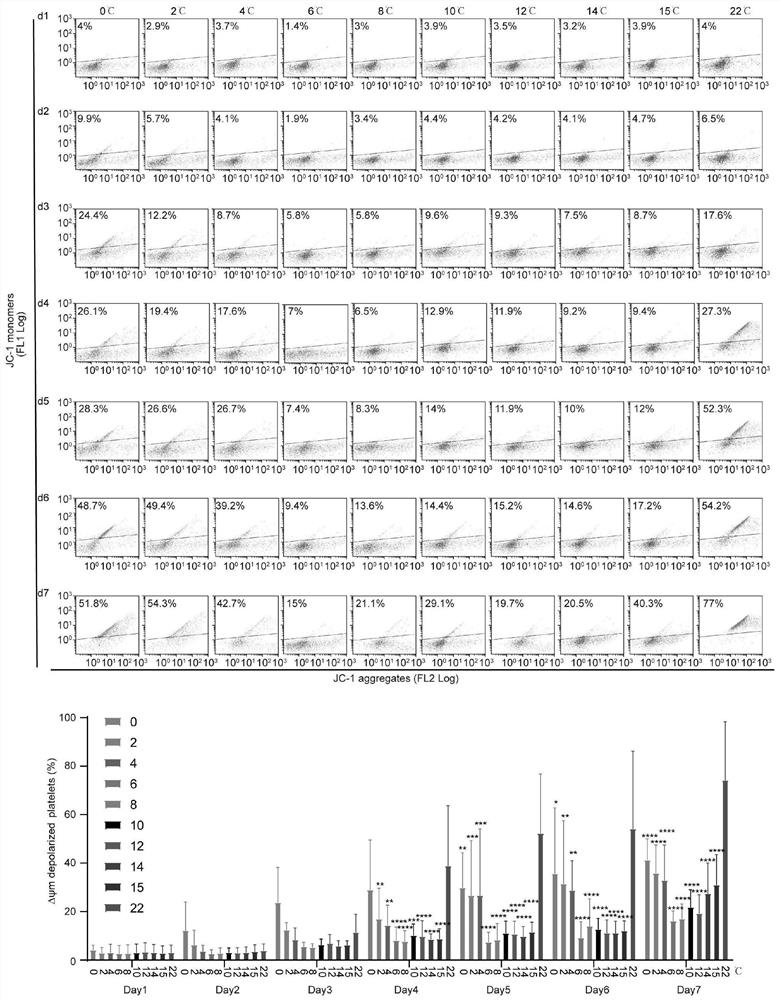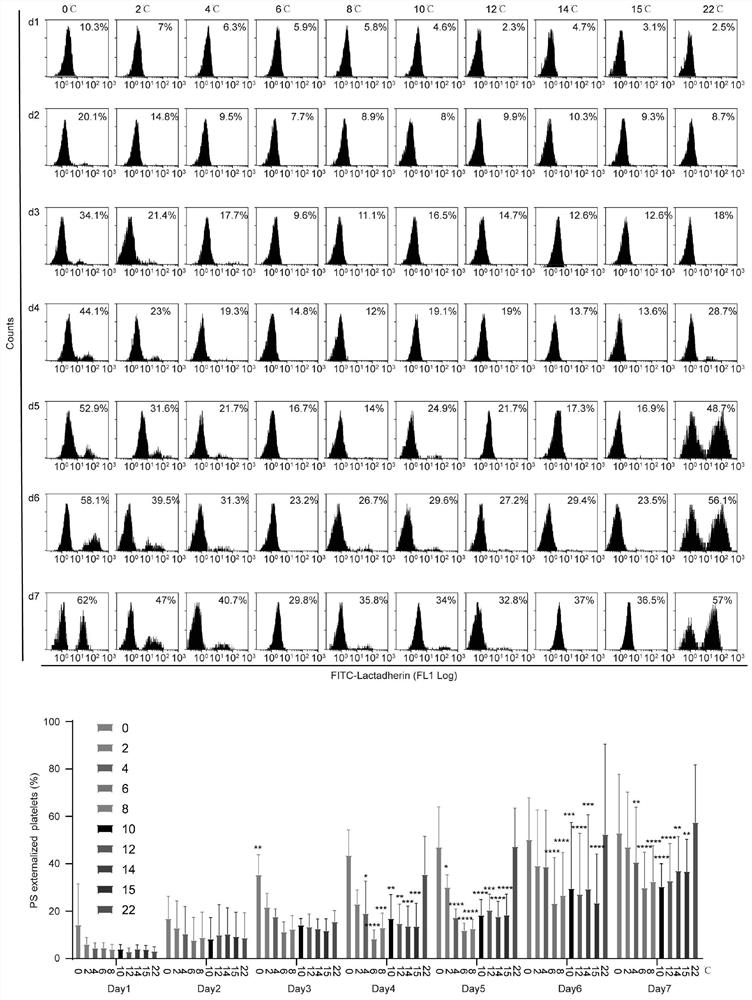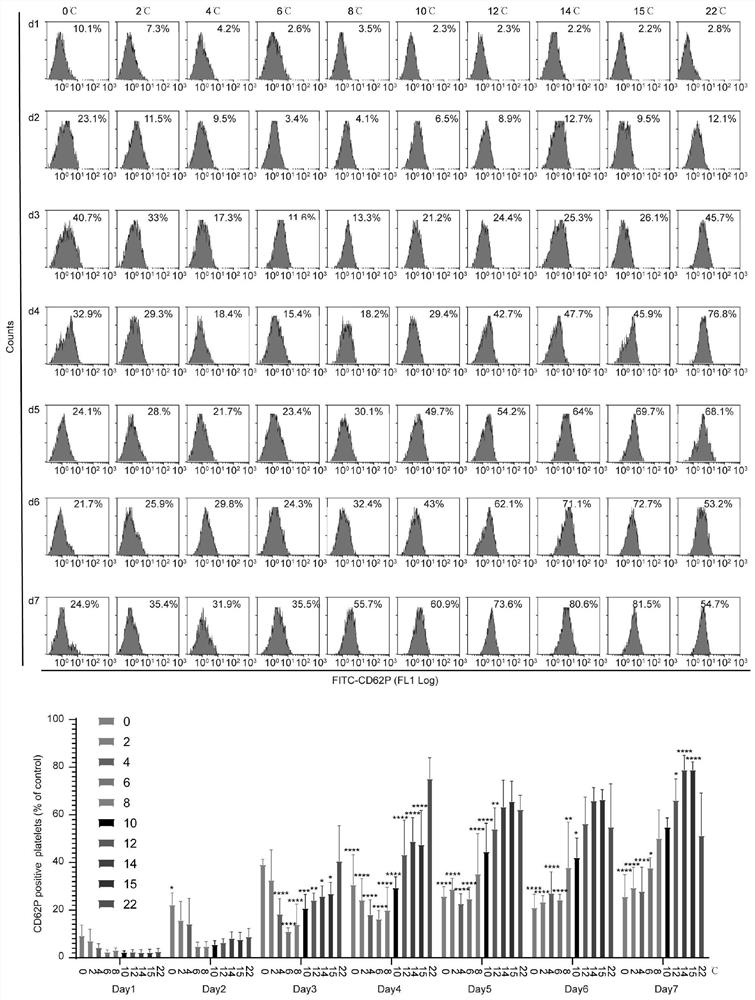Platelet preservation method
A preservation method and platelet technology, applied in the field of preservation, can solve problems such as inconvenient carrying, platelets are easily activated, agglutinated, and biologically active damage
- Summary
- Abstract
- Description
- Claims
- Application Information
AI Technical Summary
Problems solved by technology
Method used
Image
Examples
Embodiment Construction
[0038] The invention will be further described below in connection with the specific embodiments, but the embodiments are merely exemplary, and the scope of the invention is not limited. It will be understood by those skilled in the art that the details and forms of the technical solutions of the present invention can be modified or replaced without departing from the spirit and scope of the invention, but these modifications and replacements fall into the scope of the invention.
[0039] First, platelets best preservation temperature selection
[0040] The present invention provides an extension of platelet preservation, from platelet apoptosis, aggregation function, thrombosis capability, and in vivo platelet clearance rate, to select the optimal temperature of the platelet. The four indicators of JC1, PS, CD62P, and PAC1 were selected to detect the apoptosis activation state of platelets. JC1 detects film potential depolarization, which is a specific indicator of the apoptosis ...
PUM
 Login to View More
Login to View More Abstract
Description
Claims
Application Information
 Login to View More
Login to View More - R&D
- Intellectual Property
- Life Sciences
- Materials
- Tech Scout
- Unparalleled Data Quality
- Higher Quality Content
- 60% Fewer Hallucinations
Browse by: Latest US Patents, China's latest patents, Technical Efficacy Thesaurus, Application Domain, Technology Topic, Popular Technical Reports.
© 2025 PatSnap. All rights reserved.Legal|Privacy policy|Modern Slavery Act Transparency Statement|Sitemap|About US| Contact US: help@patsnap.com



